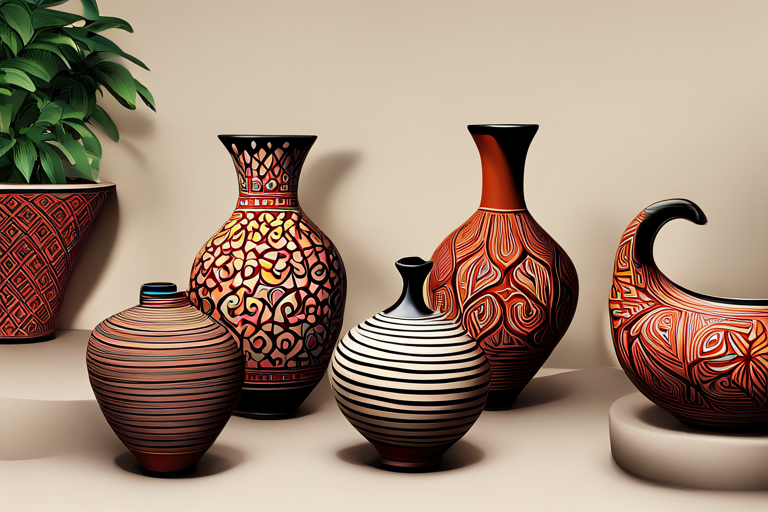In the sector of ceramics, the historical art of pottery has taken a futuristic flip. Enter the area of 3D pottery, where technology and way of life merge to create beautiful, difficult works of art. This modern technique to pottery leverages 3D printing era, establishing new possibilities for layout and production. As we delve into the world of 3d pottery, we discover its origins, technological improvements, creative implications, and its destiny in the art and layout industries.
The Origins of 3d pottery
Pottery, one of the oldest human crafts, dates lower back lots of years. Traditionally, it concerned shaping clay with the aid of hand or on a wheel, followed through firing in a kiln. The process required a high degree of skill and craftsmanship, with artisans passing down their strategies through generations. Despite technological improvements in other fields, pottery remained in large part unchanged till the arrival of 3D printing technology.
Three-D printing, or additive production, emerged inside the late 20th century. Initially used for industrial and engineering purposes, it fast discovered applications in various fields, together with remedy, fashion, and now, pottery. The integration of 3D printing into pottery represents a giant evolution, combining the precision of contemporary technology with the undying enchantment of ceramics.
How 3d pottery Works
3d pottery includes using a specialized 3D printer ready to address ceramic substances. The procedure starts offevolved with digital design, in which artists use software to create intricate and complicated fashions that could be hard or not possible to obtain by way of hand. Once the design is complete, the 3D printer builds the object layer by way of layer, the use of a ceramic paste or clay. This technique lets in for extraordinary precision and consistency in the very last product.
The printed pottery pieces then undergo the traditional firing and glazing methods. Firing hardens the ceramic cloth, making it long lasting, while glazing provides shade and finish. This combination of present day generation and traditional techniques consequences in particular, top notch pottery portions that mix the great of both worlds.
The Artistic Potential of 3D Pottery
The artistic opportunities of 3D pottery are certainly infinite. Artists can test with complex geometric shapes, complicated styles, and designated textures that would be hard to achieve thru conventional strategies. This new medium lets in for greater creativity and innovation, enabling artists to push the bounds in their craft.
Moreover, 3d pottery democratizes the artwork shape, making it handy to a broader target audience. With virtual layout equipment and 3D printers, aspiring artists can create professional-satisfactory pottery without the need for extensive schooling or highly-priced system. This accessibility fosters a new era of ceramic artists who can explore and experiment with their creativity.
3D Pottery in Design and Industry
Beyond its creative programs, 3D pottery has big implications for layout and industry. In indoors design, custom ceramic pieces may be created to in shape specific areas and styles, providing personalised answers for homes and groups. Architects and architects can include bespoke pottery into their initiatives, adding a unique touch to their paintings.
The production industry also advantages from 3D pottery generation. Mass production of ceramic objects, which includes tiles, tableware, and decorative pieces, can be streamlined and made greater green. The precision of 3D printing guarantees steady quality, decreasing waste and manufacturing charges. Additionally, custom orders may be fulfilled comfortably, catering to the growing call for for personalized merchandise.
Challenges and Considerations
Despite its many advantages, 3D pottery is not without its demanding situations. The preliminary investment in 3D printing device and software may be large, which may be a barrier for some artists and small organizations. Moreover, the learning curve associated with virtual design and three-D printing era may be steep, requiring effort and time to grasp.
There also are issues associated with the substances used in 3d pottery. The ceramic paste or clay have to be carefully formulated to work with the 3-D printer, ensuring right consistency and energy. Additionally, the firing and glazing methods must be tailored to house the particular houses of three-D-revealed ceramics.
The Future of 3D Pottery
As era continues to boost, the destiny of 3d pottery looks promising. Innovations in 3D printing materials and strategies will further decorate the satisfactory and abilities of ceramic printing. New software tendencies will make virtual design more intuitive and available, encouraging extra artists to discover 3d pottery.
Moreover, collaborations between artists, designers, and technologists will force the evolution of 3d pottery. By combining their knowledge, they can push the limits of what’s feasible, growing groundbreaking works of art and design. Educational institutions and art schools are also beginning to incorporate 3d pottery into their curricula, getting ready the following era of artists for this thrilling field.
Conclusion
3D pottery represents a first rate fusion of subculture and era, providing new opportunities for creativity, innovation, and efficiency inside the world of ceramics. By embracing this contemporary method, artists and architects can discover new frontiers, reworking their visions into fact with remarkable precision and detail. As 3d pottery keeps to adapt, it’ll undoubtedly go away a lasting effect at the artwork and design industries, paving the manner for a new technology of ceramic craftsmanship.


